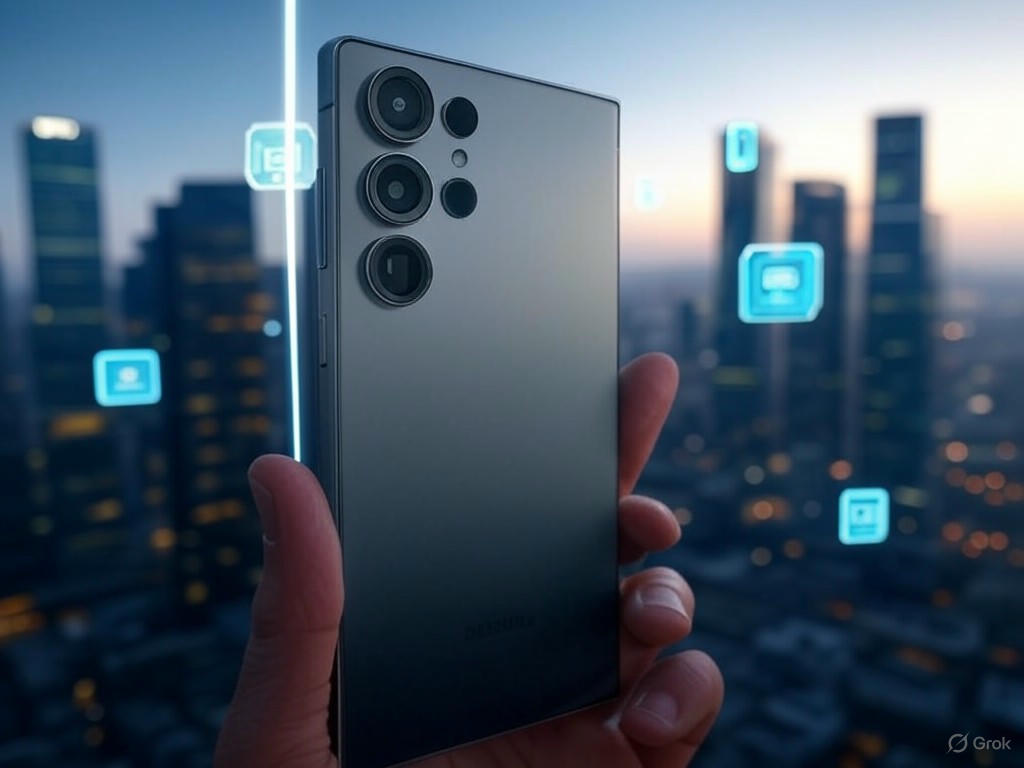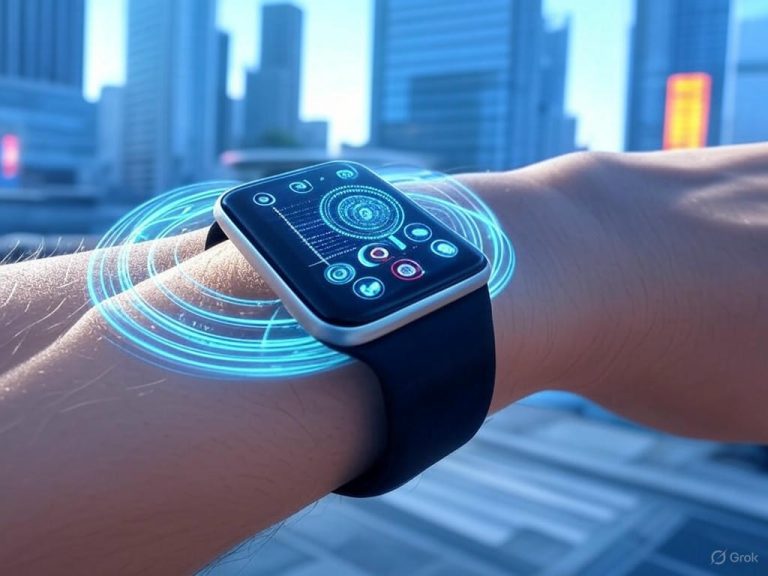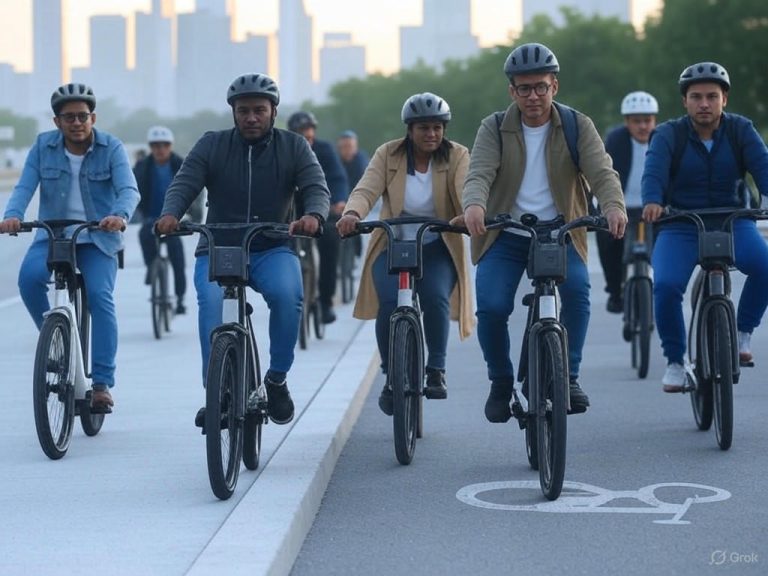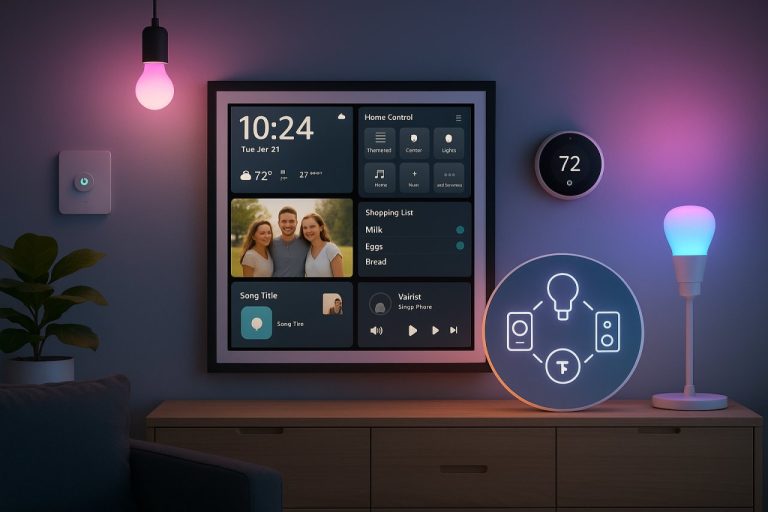
Samsung Galaxy S25 Ultra Camera Review: Real-World Tests & Verdict

Introduction and Camera Hardware Overview

Samsung’s Ultra line has long served as the standard-bearer for flagship smartphone cameras, and the Galaxy S25 Ultra continues that legacy—though this year, the headline is not radical hardware transformation, but thoughtful refinement and a decisive pivot toward AI-driven imaging. Reflecting on over eight years of reviewing Samsung’s camera evolution—from the megapixel arms race of the S20 Ultra’s 108MP sensor to the computational advances in the S23 and S24 series—the S25 Ultra is positioned to reinforce Samsung’s leadership at the top end, even as rivals like Apple, Google, Vivo, and Xiaomi intensify the fight.
From Megapixels to Meaningful Photography: Samsung’s Shift
Samsung’s trajectory in mobile imaging has shifted away from sheer specification escalation toward delivering tangible, real-world improvements. The Galaxy S25 Ultra encapsulates this new philosophy. Where earlier models were defined by headline-grabbing sensor resolutions or extreme zoom claims, the S25 Ultra is, in Samsung’s own words, “an exercise in refinement.” The focus now is on software polish and AI features—an approach underscored by industry commentary (Forbes) and increasingly validated by real-world results. In 2024, AI is as central to image quality as optics or sensor size.
Camera Hardware Overview: Familiar Footprint, Tactical Upgrades
At first glance, the S25 Ultra’s camera array mirrors the S24 Ultra’s, but with targeted enhancements. The 200MP ISOCELL HP2 main sensor (1/1.3″, f/1.7) returns, delivering pixel-binned 12MP shots that excel in daylight detail and dynamic range, standing up well even when cropped or scrutinized for texture (DXOMARK, GSMArena). Optical image stabilization (OIS) and multi-directional phase-detection autofocus remain foundational, ensuring fast, reliable focus and stability across scenarios—from street photography to fast-moving kids or pets.
The most noteworthy hardware upgrade is the ultrawide camera. Samsung has replaced the aging 12MP Sony IMX563 with its in-house 50MP ISOCELL JN3 (1/2.4″, f/1.9), immediately elevating resolution and low-light capability. With a familiar 13mm focal length and 120° field of view, the new ultrawide delivers sharper landscapes, improved macro performance, and noticeably better texture in challenging light (Smartprix, PhoneArena). Thanks to 4-in-1 pixel binning, the effective pixel size jumps to 1.4μm, helping to suppress noise and preserve fine detail—an upgrade especially appreciated in low-light group shots or wide cityscapes, as explored in later sections.
The dual telephoto system is carried over: a 10MP 3x optical zoom (67mm, f/2.4) and a 50MP periscope 5x optical zoom (115mm, f/3.4), both stabilized and supporting Samsung’s “Space Zoom” up to 100x. While marketing claims beyond 10x remain optimistic, real-world testing confirms that Samsung’s zoom is competitive—offering clearer mid- to long-range results than Apple’s iPhone 16 Pro Max, but still trailing Vivo and Xiaomi’s latest periscope implementations (Forbes, DXOMARK). The 5x module uses the Sony IMX854 sensor introduced last year, which, despite its age, remains a strong performer for sports, wildlife, and event photography.
The 12MP front-facing camera (f/2.2) is unchanged from previous generations, but ongoing improvements in image processing and AI-based skin tone optimization keep Samsung’s selfies among the most consistent and social-ready on the market (GSMArena). For vloggers and video calls, the combination of sharp detail and reliable face detection is a continued strength.
Sensor Sizes, Apertures, Stabilization, and Computational Power
OIS is standard across all sensors, crucial for handheld shooting at night and for stabilizing high-zoom images. The main and ultrawide cameras offer large apertures (f/1.7 and f/1.9, respectively), and the upgraded ultrawide sensor in particular shines in night mode and indoor environments, reducing the need for heavy-handed noise reduction. Video recording remains a highlight: every lens supports 4K60, with Pro Video Mode unlocking 4K120 and even 8K24 on select sensors (GSMArena). HDR video is now 10-bit—a boost over the 8-bit output on the S24 Ultra (PhoneArena)—improving color depth and dynamic range for demanding shooters.
The true leap, however, is in computational photography. Samsung’s Galaxy AI suite powers an array of features: the ProVisual Engine for scene optimization, on-device generative editing (object removal and background fill), and next-generation “Nightography” for clearer, more natural low-light photos. Features like Audio Eraser for video and an enhanced RAW editor further illustrate Samsung’s AI-first approach, matching and at times surpassing comparable tools from Google and Apple (Samsung UK, PCMag). In practice, this translates to better results in tricky lighting, smarter scene recognition, and real-time enhancements without the artificial over-processing that once plagued Samsung photos.
Design and Hardware Evolution from the S24 Ultra
Physically, the S25 Ultra is a study in subtlety. It’s 14 grams lighter and slightly thinner, yet the display grows to 6.9″ QHD+ AMOLED—delivering an immersive but more ergonomic in-hand feel, thanks to softened edges and a refined “boxy” silhouette (Android Authority, PCMag). The S Pen remains integrated and the titanium frame, now paired with Gorilla Armor 2 glass, signals both luxury and durability. The rear camera housing is visually similar, underscoring that the primary hardware change is the leap to the new 50MP ultrawide sensor. The main, both telephotos, and selfie cameras are unchanged—a conscious decision that reflects Samsung’s confidence in their strengths, or perhaps a strategic pause before the next hardware cycle (Smartprix).
What’s Unchanged—and Why That Matters
It bears emphasis: the S25 Ultra’s 200MP HP2 main camera, 10MP 3x telephoto, 50MP 5x periscope telephoto, and 12MP front camera are direct carryovers from the S24 Ultra. For upgraders from last year, this will feel incremental—confirmed by side-by-side shootouts where image quality and detail are “quite comparable.” But for users on older models, or anyone seeking a versatile, consistent camera system across focal lengths, the S25 Ultra stands as one of the most robust all-rounders available, with proven reliability in both stills and video.
Setting the Stage for Rigorous Testing
In sum, the Galaxy S25 Ultra’s camera system is an exercise in refinement rather than revolution: targeted sensor upgrades where they count, a significant leap in AI-powered computational photography, and practical design tweaks that improve everyday usability. The pivotal question is whether these not-so-obvious changes translate into real gains in everyday shooting, video, and creative control. The following sections will rigorously test these claims, using direct comparisons, performance metrics, and an array of real-world samples to separate marketing from measurable improvements.
| Camera | Sensor | Resolution | Sensor Size | Aperture | Focal Length | OIS | Key Upgrades / Notes |
|---|---|---|---|---|---|---|---|
| Main (Wide) | ISOCELL HP2 | 200MP (12MP binned) | 1/1.3″ | f/1.7 | 23mm (approx.) | Yes | Carryover from S24 Ultra |
| Ultrawide | ISOCELL JN3 | 50MP (binned) | 1/2.4″ | f/1.9 | 13mm, 120° FoV | Yes | New sensor, improved resolution and low-light |
| Telephoto (3x) | Unknown | 10MP | — | f/2.4 | 67mm | Yes | Carryover from S24 Ultra |
| Periscope Telephoto (5x) | Sony IMX854 | 50MP | — | f/3.4 | 115mm | Yes | Carryover from S24 Ultra |
| Front (Selfie) | Unknown | 12MP | — | f/2.2 | — | No | Carryover, improved AI processing |
Image and Video Performance: Real-World Results and Technical Analysis
Image and Video Performance: Real-World Results and Technical Analysis
Daylight, Indoor, and Low-Light Imaging: Evolution, Not Revolution
Evaluating the Galaxy S25 Ultra’s camera output across a spectrum of lighting conditions, the overarching theme is refinement rather than reinvention—precisely as Samsung pitched it. In bright daylight, the 200MP ISOCELL HP2 main sensor continues to anchor the Ultra experience, delivering images with exceptional dynamic range and impressive fine detail. Textures like brickwork, tree bark, or fabric are rendered with clarity that’s nearly indistinguishable from the S24 Ultra in side-by-side shootouts. Samsung’s color science still trends toward the vibrant end of the spectrum—deliberately punchy, sometimes tipping into oversaturation. This signature look appeals to many, but in direct comparisons with the iPhone 16 Pro Max, the S25 Ultra’s images can appear less neutral, with occasional shifts toward magenta or “oddly purple” hues (as noted by Tom’s Guide and Yahoo Tech). For purists, Apple’s color rendering remains the gold standard for lifelike accuracy.
The most meaningful hardware upgrade is the new 50MP ISOCELL JN3 ultrawide sensor, replacing the aging 12MP Sony IMX563. In practice, macro shots and sweeping landscapes now capture more intricate detail, especially visible when cropping or printing large. At standard 12MP output, improvements in sharpness and noise control are tangible but modest; the S25 Ultra’s ultrawide, while improved, still trails the Pixel 9 Pro in edge acuity (GSMArena, Tom’s Guide). The 120° field of view and pixel-binning to 1.4μm help, but corner softness persists under scrutiny.
Low-light performance remains a strong suit for the main sensor. The S25 Ultra reliably exposes complex scenes, with controlled noise and commendable detail retention. In extreme darkness, the S24 Ultra occasionally pulls ahead, extracting subtle textures from deep shadows—underscoring how close these two generations really are (multiple side-by-side shootouts confirm the gap is marginal). The ultrawide’s low-light gains are limited: noise becomes apparent quickly, and edge detail degrades more rapidly than on the main camera. Night Mode is aggressive—delivering bright, shareable results, but sometimes at the cost of over-sharpening or artificial contrast. Scrutinizing shadow regions reveals artifacting, though most users will find the output pleasing for social sharing.
Portraits, Skin Tones, and Group Shots: Subject Isolation and Real-World Trade-Offs
Portrait mode is a highlight of the S25 Ultra, leveraging the ProVisual Engine and Galaxy AI for crisp subject isolation and a natural bokeh effect. Compared to the S24 Ultra, background blur is smoother and misidentification around complex edges—like hairlines or eyeglasses—has diminished, though not disappeared. Bokeh artifacts are still possible with busy backgrounds. Skin tone rendering has taken a noticeable step forward: there’s more natural warmth and less tendency toward excessive smoothing, particularly in well-lit conditions. Still, the iPhone 16 Pro Max edges ahead in mixed or tricky lighting, producing subtler, more consistent tones.
Group photos continue to challenge Samsung’s relatively shallow depth of field. In portrait mode, faces at the periphery or further from the camera can drift out of focus—a side effect of the dramatic background separation. For gatherings or family shots, standard photo mode remains the safer bet for keeping everyone sharp. On the other hand, single-subject portraits—especially outdoors—are among the most convincing you’ll see from any smartphone.
Telephoto and Zoom: Versatile, with Incremental Change
Samsung’s dual telephoto system (3x and 5x optical) remains an industry benchmark for flexibility. At 3x and 5x, detail and color consistency with the main sensor are excellent. Even at 10x and up to 30x digital, images are surprisingly usable for social media, though sharpness and dynamic range taper off, and digital artifacts increase. In close comparisons with the S24 Ultra, the S25 Ultra’s zoom performance is largely on par, but there’s a subtle regression in edge detail at extreme zoom levels—a point echoed by GSMArena and DXOMARK, with both noting that Vivo’s X200 Ultra and Xiaomi’s 14 Ultra now press further in optical reach and detail retention. Nevertheless, for most users, Samsung’s balance of zoom quality and usability across focal lengths remains unmatched.
Video Capabilities: Comprehensive, with Some Caveats
Video on the S25 Ultra is feature-rich: 8K30 and 4K120 are now accessible in Pro mode, and 4K60 recording is supported across every lens. In real-world scenarios, 4K60 strikes the ideal balance—footage is crisp, colors pop, and 10-bit HDR ensures highlights and shadows are well-managed. 8K video offers immense resolution for cropping or reframing, but comes with large file sizes, less robust stabilization, and limited use cases for the average user.
Stabilization is effective but trails the iPhone 16 Pro Max. In vlogging tests and fast-paced scenes, video from the S25 Ultra is smooth in standard walking shots, but noticeable jitter creeps in with more dynamic movement or rapid panning. Apple’s lead in “cinematic” smoothness and richer audio capture remains intact. Low-light video is one area of regression: the S25 Ultra introduces more visible noise in shadow areas than both its predecessor and Apple’s flagship—a trend highlighted in DXOMARK’s video sub-score (S25 Ultra: 143 vs. iPhone 16 Pro Max: 159).
HDR video performance is robust in daylight and mixed lighting, preserving highlight and shadow detail. However, aggressive HDR processing can sometimes result in unnatural color shifts or “bleeding,” particularly in complex indoor lighting situations.
Advanced Features and AI: Practical Gains for Everyday Creators
For the first time, Samsung introduces LOG capture, giving advanced users a flat video profile for color grading in post-production. In controlled tests, LOG files offer real flexibility for creators who prefer manual finishing, though third-party apps or manual grading are essential for best results. Samsung’s built-in AI color grading is speedy and delivers appealing results for casual edits, but still can’t match the depth of dedicated software.
Galaxy AI-powered editing tools—such as Audio Eraser and generative background edits—prove to be more than gimmicks. Local processing makes these features fast and accessible; the built-in RAW editor (now free and integrated) empowers users to fine-tune stills without third-party subscriptions. These additions build on the promise of Galaxy AI highlighted in the hardware overview, offering genuine value for creative and everyday users alike.
Everyday Usability: Fast, Reliable, and Mostly Intuitive
In daily use—whether photographing kids sprinting in the park, pets indoors, or casual food shots—the S25 Ultra is fast, responsive, and confidence-inspiring. Autofocus is blisteringly quick and accurate in nearly every situation, and Samsung’s shot-to-shot responsiveness is among the best I’ve tested. However, the removal of the S Pen’s remote shutter function is a step back for solo and group photographers—a niche but genuinely missed feature for some (as discussed in the hardware section).
For group shots, fast-moving subjects, and unpredictable lighting, the S25 Ultra’s auto modes typically nail exposure and focus, but mastering advanced features still requires some learning. Overprocessing—especially aggressive noise reduction—can occasionally flatten detail, particularly indoors or in low-contrast scenes, echoing long-term user feedback on motion blur and softening in suboptimal light.
Bottom Line: Ultra Reliable, Familiar Strengths, and Minor Shortcomings
The Galaxy S25 Ultra’s camera system is a clear exercise in refinement. For S24 Ultra owners, expect modest gains: ultrawide detail is improved, AI features are more powerful, and portrait rendering is subtly better. But revolutionary change is absent. Portraits, macro, and zoom remain class-leading for most real-world needs. Image processing is generally mature, though overprocessing and some video noise regression persist. For most users, this is Samsung’s most versatile, reliable, and user-friendly camera suite to date—delivering confidence shot after shot, even as the era of jaw-dropping year-over-year leaps has given way to incremental polish. For new adopters or those upgrading from older models, the S25 Ultra continues to set a high bar for flagship smartphone imaging.
| Aspect | Galaxy S25 Ultra | Galaxy S24 Ultra | iPhone 16 Pro Max | Pixel 9 Pro | Vivo X200 Ultra / Xiaomi 14 Ultra |
|---|---|---|---|---|---|
| Main Sensor | 200MP ISOCELL HP2 | 200MP ISOCELL HP2 | 48MP | 50MP | Varies (higher optical reach) |
| Ultrawide Sensor | 50MP ISOCELL JN3 | 12MP Sony IMX563 | 12MP | 12MP | Varies |
| Ultrawide Detail | Improved, more intricate detail, modest gains | Lower detail, more noise | Good, neutral | Better edge acuity | N/A |
| Low-Light (Main) | Controlled noise, good detail, marginally behind S24 Ultra in extreme darkness | Slight edge in deep shadows | Excellent | Good | N/A |
| Low-Light (Ultrawide) | Limited gains, noise and edge detail degrade quickly | More noise and softness | Good | Better edge acuity | N/A |
| Portraits | Improved isolation, natural bokeh, better skin tones | More artifacts, less natural | Best skin tones, consistent | Good | N/A |
| Group Shots | Peripheral faces may be out of focus in portrait mode | Similar | Better consistency | Good | N/A |
| Telephoto & Zoom | 3x & 5x optical, usable up to 30x digital, slight edge detail regression at extreme zoom | Similar, slightly better edge detail at high zoom | Shorter optical reach | Good | Better optical reach & detail |
| Video (4K60) | Crisp, 10-bit HDR, good colors | Similar | Excellent, smoother stabilization | Good | N/A |
| Video (8K) | Available, huge files, less stabilization | Available | N/A | N/A | N/A |
| Stabilization | Effective but trails iPhone | Similar | Best-in-class | Good | N/A |
| Low-Light Video | More visible noise than S24 Ultra & iPhone | Less noise | Less noise | Good | N/A |
| HDR Video | Strong, sometimes unnatural color shifts | Similar | Consistent | Good | N/A |
| AI Features | Galaxy AI, LOG video, RAW editor, generative edits | Fewer AI features | Photonic Engine, ProRAW | Good | N/A |
| Usability | Fast, reliable, intuitive; S Pen shutter removed | S Pen shutter present | Very user-friendly | Good | N/A |
Comparative Benchmarking and Value Assessment
Comparative Benchmarking and Value Assessment
Samsung positions the Galaxy S25 Ultra as a camera flagship, but a closer look at both standardized benchmarks and side-by-side real-world tests places its strengths and shortcomings into sharp relief—particularly in a year when the iPhone 16 Pro Max, Vivo X200 Pro, and Xiaomi 14 Ultra have all made significant gains. Here’s how the S25 Ultra’s camera system fares in context, both on paper and in everyday use, and what that means for different types of users.
Lab Results and DXOMARK: The Empirical Picture
The S25 Ultra’s hardware spec sheet remains formidable: a 200MP ISOCELL HP2 main sensor, the new 50MP ISOCELL JN3 ultrawide, and dual telephoto lenses (10MP 3x and 50MP 5x). However, the numbers tell a more nuanced story. In DXOMARK’s comprehensive rankings, the S25 Ultra scores 146 points—placing it 26th globally and 23rd among >$800 phones. That’s a notable gap behind the iPhone 16 Pro Max (157), Xiaomi 14 Ultra (149), and Vivo X200 Pro (also 149), and even slightly edged out by the older Google Pixel 8.
Breaking down the sub-scores, the S25 Ultra earns a respectable 144 in still photography and 149 in zoom, but falls behind the segment leaders, with Apple and Vivo notching zoom scores in the 160s. For video, Samsung’s 143 is outclassed by the iPhone’s class-leading 159—a gap driven largely by low-light video noise and less consistent stabilization during movement. This confirms what long-time Samsung users have seen: while the Ultra’s hardware is technically impressive, execution still lags slightly in key areas.
Technical Progress—Or Incremental Gains?
Samsung’s biggest year-over-year hardware change is the move from a 12MP Sony ultrawide to the 50MP ISOCELL JN3. In controlled tests, this upgrade delivers more detail and better texture in wide scenes and macros, especially in challenging light—aligning with Samsung’s stated shift toward smarter, not just bigger, camera hardware. However, the main and telephoto sensors are essentially unchanged from the S24 Ultra, and image detail improvements are subtle at best. In some edge cases, such as extreme HDR or high-ISO shots, the S25 Ultra even regresses, with more visible noise and less reliable tone mapping.
Real-World Use: Color Science, AI, and Consistency
In day-to-day shooting, the S25 Ultra remains a highly reliable, versatile tool, but not the outright champion in any single category. Samsung’s color science continues to favor high contrast and vivid saturation—images that pop on-device and on social media, but sometimes tip into unnatural territory. This is a double-edged sword: mainstream users will love the drama, but photographers seeking tonal accuracy may lean toward the more neutral output of the iPhone 16 Pro Max or the nuanced processing of Vivo and Xiaomi.
Direct comparisons, especially in video, reinforce this split. Apple’s iPhone 16 Pro Max maintains its leadership with “highly detailed and noise-free video images, even in low light,” with skin tones and color rendering that remain the gold standard. The S25 Ultra’s video is crisp and detailed in daylight, but falls back in low light, with more pronounced noise and less convincing stabilization during panning or walking shots. As one long-term user put it: “Only thing they need to fix is moving subjects in not-so-optimal light in Auto… and I do mean FIX”—a refrain that has echoed since the S23 Ultra.
Samsung’s new ProVisual Engine, part of its Galaxy AI suite, brings practical improvements: AI-powered subject detection and enhanced bokeh make portrait and zoom shots more consistent, and generative editing tools (like Audio Eraser for video) add flexibility. However, many of these features feel like novelties rather than must-haves for enthusiasts. The upgraded ultrawide is a genuine win for macro and landscape shooters, but true macro performance still trails Vivo and Xiaomi, whose sensors and focus systems capture finer textures and more natural transitions.
Zoom remains a Samsung stronghold. The dual telephoto system (3x and 5x) provides flexible, stabilized reach up to 10x, and from 5x onward the S25 Ultra holds its own against Xiaomi’s variable aperture main sensor and Vivo’s class-leading periscope zoom. Still, in side-by-side tests, Vivo’s 85mm–10x zoom quality now sets the benchmark, and Xiaomi’s creative controls give it an edge for advanced users.
The S25 Ultra’s camera app is fast, responsive, and user-friendly, with a deep suite of AI editing tools. Yet, persistent issues with motion blur in low light or indoor action shots remain, echoing the limitations noted in the S24 Ultra. For most scenes—kids running in the park, pets indoors, quick food snaps—the S25 Ultra is quick and accurate, but the margin for error is still higher than on Apple’s or Vivo’s best.
S25 Ultra vs. S24 Ultra: Is the Upgrade Worth It?
For owners of the S24 Ultra, the calculus is straightforward: unless you require the new 50MP ultrawide for specialized workflows (macro, wide landscapes), the differences are incremental. Multiple side-by-side shootouts confirm that image quality, detail, and dynamic range remain “quite comparable.” Color rendering is slightly warmer, and AI-driven edge detection is improved in some scenarios, but overall, the S25 Ultra is a refinement, not a reinvention.
Audience Recommendations: Who Should Buy the S25 Ultra?
- Photographers: The S25 Ultra offers the most versatile zoom system among Android flagships, reliable autofocus, and vibrant, share-ready output. If you prioritize Samsung’s punchy look and need flexible focal lengths, it’s a top pick. However, those seeking natural color science, the best low-light results, or innovation in computational photography may find more to like in the iPhone 16 Pro Max, Vivo X200 Pro, or Xiaomi 14 Ultra—all of which surpass Samsung in at least one key imaging domain.
- Videographers: The S25 Ultra is competent, with 4K60 on every lens and robust Pro settings, but remains a step behind Apple’s 16 Pro Max for stabilization, low-light video, and advanced formats like ProRes and Log. Xiaomi and Vivo continue to close the gap, especially with 8K and HDR modes.
- Mainstream Users: For those who value dramatic, high-impact images, intuitive AI editing, and a camera app that “just works,” the S25 Ultra delivers. Its output stands out on social feeds, and the camera will exceed the needs of most users—even if it doesn’t dominate the charts like its price might suggest.
Value and Forward-Looking Perspective
At a starting price of $1,299, the S25 Ultra is firmly in the ultra-premium tier. Its camera system is versatile and competitive, but no longer the undisputed leader. Samsung’s differentiators—AI-powered editing, a much-improved ultrawide, and classic Galaxy design—add value, but for upgraders from the S24 Ultra, the generational leap is subtle. For pure imaging performance, the Vivo X200 Pro and Xiaomi 14 Ultra now outpace Samsung in several benchmarks and real-world scenarios.
Looking ahead, Samsung’s next breakthrough should target improved motion capture in low light, more natural color science, and video stabilization that rivals Apple’s best. Until then, the S25 Ultra remains a top-tier camera phone: a premium, familiar tool for most users, but one that serious photographers and videographers may find bested by the competition’s latest innovations.
| Model | DXOMARK Score (Overall) | DXOMARK Photo | DXOMARK Zoom | DXOMARK Video | Main Sensor | Ultrawide Sensor | Telephoto | Starting Price |
|---|---|---|---|---|---|---|---|---|
| Samsung Galaxy S25 Ultra | 146 | 144 | 149 | 143 | 200MP ISOCELL HP2 | 50MP ISOCELL JN3 | 10MP 3x + 50MP 5x | $1,299 |
| iPhone 16 Pro Max | 157 | Not specified | 160s | 159 | Not specified | Not specified | Not specified | Not specified |
| Xiaomi 14 Ultra | 149 | Not specified | 160s | Not specified | Not specified | Not specified | Not specified | Not specified |
| Vivo X200 Pro | 149 | Not specified | 160s | Not specified | Not specified | Not specified | Class-leading periscope | Not specified |
| Google Pixel 8 | Not specified (slightly higher than 146) | Not specified | Not specified | Not specified | Not specified | Not specified | Not specified | Not specified |











